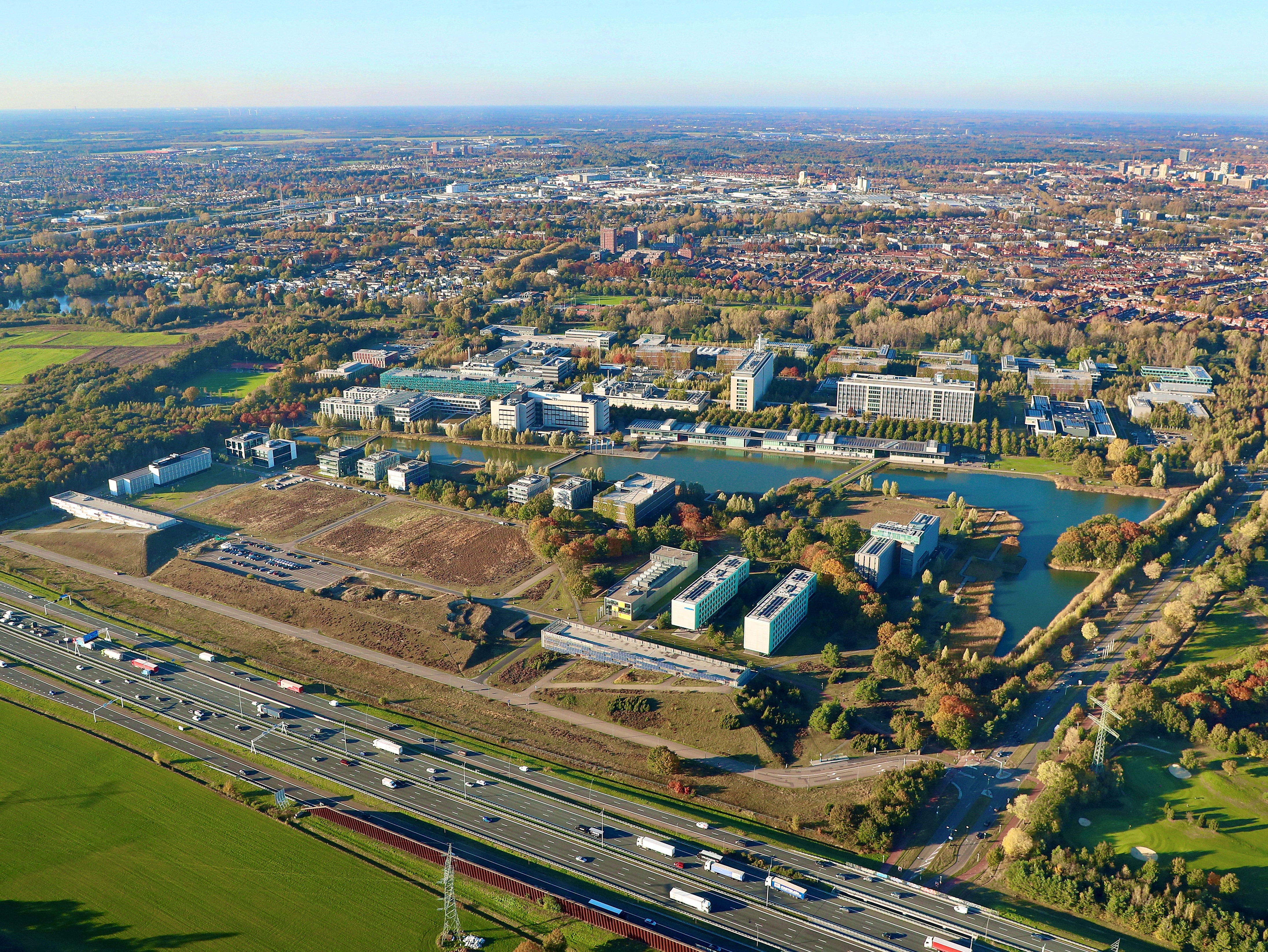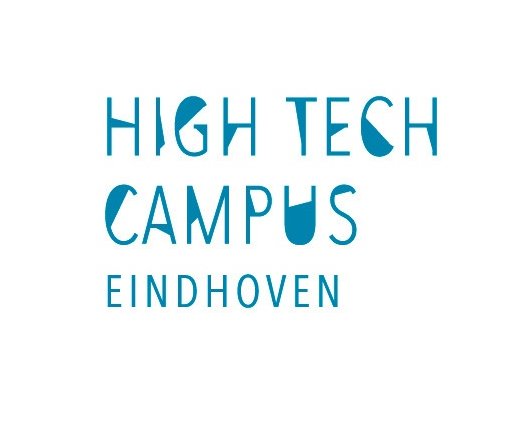


This article was based on the workshop "The impact of Geothermal energy on the Smartest Square Kilometer in Europe" organized by Gebruikersplatform Bodemenergie on January 8. For this workshop, Hydreco and High Tech Campus Eindhoven brought together experts on WKO to discuss the implementation of collective heating networks, with the High Tech Campus as a case study.
The High Tech Campus in Eindhoven (HTCE), the smartest square kilometer in Europe, benefits from a flourishing geothermal energy system. A large number of the buildings on this business park are connected to a ring pipeline and receive heat and cold from a collective WKO system with 10 cold and 10 heat sources. Performance is continuously optimized, also because there is a creative competition element between the 30 buildings on the Campus.
300+ companies on HTCE
Many companies on the High Tech Campus carry out energy-intensive activities. Some residents need a lot of electricity, others a lot of heat or cooling. All these different energy flows have been mapped on the High Tech Campus and are exchanged as effectively as possible. Surpluses are not wasted, but rather stored for later use. The Campus was created by Philips to bring together certain business activities in one location. But in the early 2000s the Campus opened up and since then the HTCE has grown to include a wide variety of technical companies, from multinationals and startups to laboratories and service providers. The HTCE now houses over 300 companies that employ 12,500 people. The total real estate area is 350,000m², of which 25,000m² is R&D space, spread over approximately 50 different buildings. In the coming years several large, new buildings will be added to the strip of land closest to the A2.
Groundwater protection area
Twenty years ago, Brabant Water was asked to assist as a partner in the realization of the geothermal energy system. This was an important move because the HTCE is located in the middle of a groundwater protection area. The sources installed at the time were initially only for Philips' NatLab, but were deliberately installed for the entire Campus. 20 wells were drilled, which puts this WKO system in the top 5 largest systems in the Netherlands. It is also one of the two systems in the country that has been realized in a groundwater protection area. This Campus was one of the first business sites on which most buildings are connected to a heating and cooling network.
A few years ago, Brabant Water split off the activities involved in the exploitation of geothermal energy and transferred them to Hydreco. This company, still owned by Brabant Water, now continues the work and provides overall management and monitoring on behalf of the owner of the HTCE.
Various new techniques
Wilfried Huis in 't Veld from IF Technology was involved in the development of the system as a technical advisor in 2001. “In 2001, a WKO system – 'at that time we talked about a WKO' – was still a young technology. We came across certain parts here for the first time. Infiltration, for example, was very new. The size of the collective system also made this project special. And of course the permit process. This permit is, even now, ahead of many current permits. For example, in addition to a heat balance, the owner must also maintain a water balance. Monitoring was also already laid down as an obligation in the permit at the time.”
Huis in 't Veld, together with colleague Herman Velvis, senior advisor on technical installations at IF Technology, talks about the importance of energy exchange between buildings. There are buildings that always produce heat and buildings that need heat or have cold left over more often. On the loop, heat and cold are first exchanged between the buildings before it is stored in one of the sources. In addition, there is a dry cooler on a number of buildings, so that sources can also be upgraded. Furthermore, the control technology is such that the administrator can scale up or down source pairs fairly easily.
Collective ring network
The collective pipe network on the Campus is in a figure eight. The big advantage of this is that energy can flow in both directions. If a repair takes place somewhere or there is an emergency, the water can flow in the other direction so buildings are virtually never without energy. It turns out that there is an enormous diversity of systems in the buildings. There are small systems with one heat pump but also large systems with multiple heat pumps, hybrid systems, and sometimes also with backup boilers or specific tap water systems.
The entire system on the Campus has reached its maximum in terms of cooling. Currently, 85% of the cooling demand can be met with free cooling from the sources, so 15% must be met with active cooling. In the coming years, the HTCE will add approximately 100,000m² of building space. It will be a major challenge to also supply those buildings with energy with the current source capacity. Part of the energy required for these new buildings can come from optimizations still to be implemented in the existing buildings.
Further optimizations
Mike Schraven is partly responsible for this optimization. He works at Hydreco and has been responsible for the operation of the soil system at the HTCE since 2011. “We deliver to 30 buildings. Many of those buildings have their own energy system, their own building management system and their own technical service provider. And yet we want and have to work together with all those buildings and systems,” says Schraven. “We are obliged to supply heat from the ground at an outside temperature below 9°C and to supply cold at a temperature above 16°C. The buildings themselves are obliged to return a certain amount of heat and cold.”
“In the first years of the system we ended up with a significant cold surplus. In 2015, NorthC opened a data center at the HTCE. Since the center has started, there has been more balance and we are moving towards a heat surplus. To combat this, several buildings have dry coolers on the roof. If necessary, we ask the technical managers in those buildings if they can switch on the dry cooler at certain times to regenerate the sources.”
Mutual competition
To maximize the performance of the collective system, a sort of competition is going on. Every month, on behalf of the HTCE, Mike Schraven maps the performance of the various buildings and shares this with the various operators of those buildings. The building manager and/or technical service providers will then see all the results — of their own building as well as that of other buildings. In buildings with multiple, different tenants, it is often the owner of the HTCE who is responsible for those buildings.
“Because we give everyone insight into their use, but also into the return of energy and the differences with the SLA they have concluded, we can improve performance step by step. We can often also show how and when they can improve performance. It is not that there is a bonus or penalty directly linked to it, but rather the insight encourages administrators to optimize their own system as far as possible. And in any case, it emphatically leads to more awareness among everyone about the responsibility for the proper functioning of the collective system. However, a number of these optimizations are mandatory if you are connected to our collective system. This is part of the rental contract that you enter into and you will therefore also know if a company establishes itself here.”
Eight chillers as backup
NorthC's data center became operational in June 2015 and has been part of the collective energy system from the start. Henk Veldwijk, project manager at NorthC: “Our building has an energy requirement of 1800 kWh per hour, every day. Although most of the energy comes from the collective WKO system, the data center is not completely dependent on it. “There are eight cooling machines on our roof that take over the function of the WKO system in the event of a disaster or if it cannot supply or cannot supply sufficient energy due to necessary maintenance. In the summer we store the heat from our data center in the ground. But in winter, the removed heat is put directly into the ring network, so that other buildings can use that heat. In winter, we also receive the necessary cold directly from the other buildings, so that we have to use the sources as little as possible.”